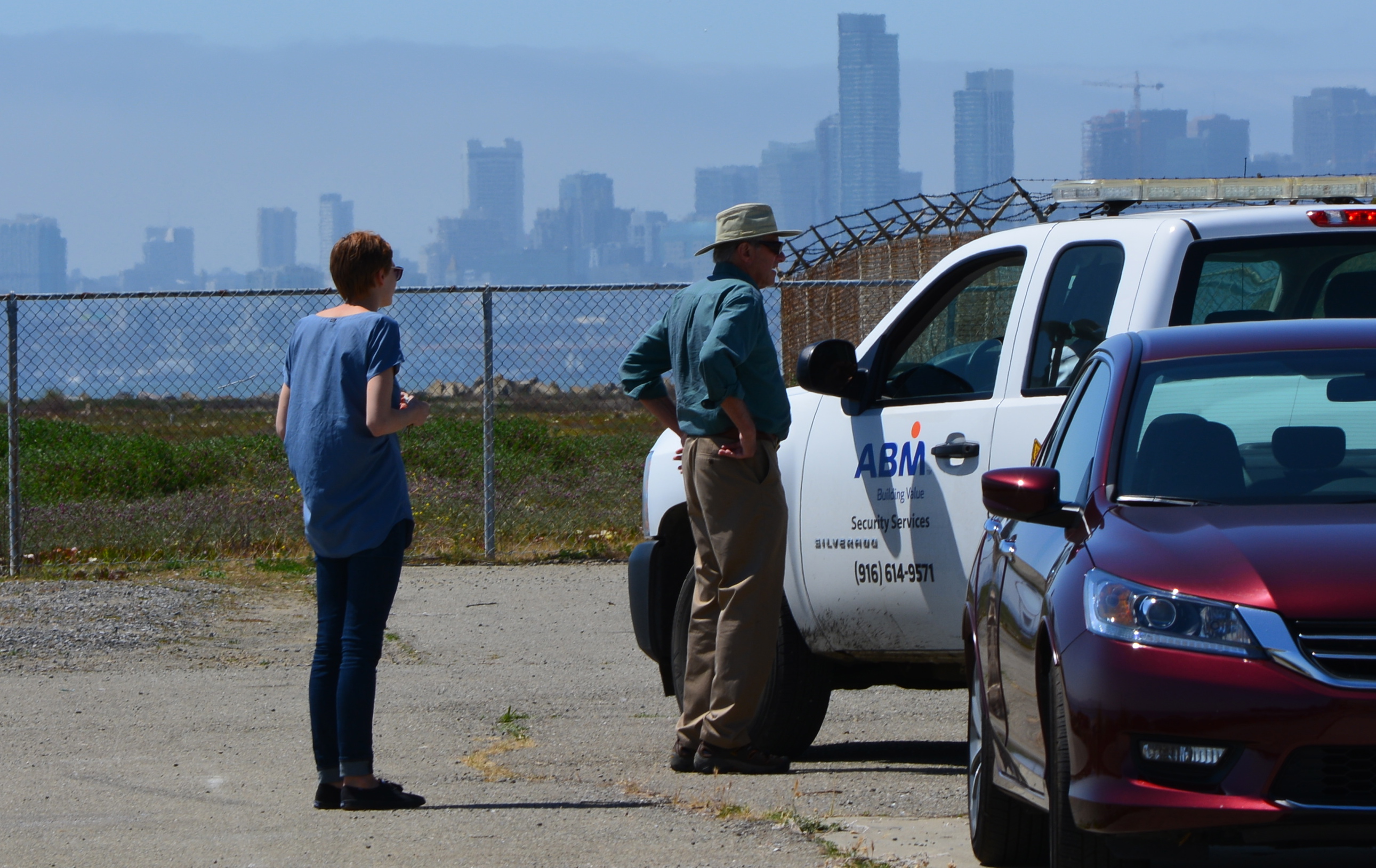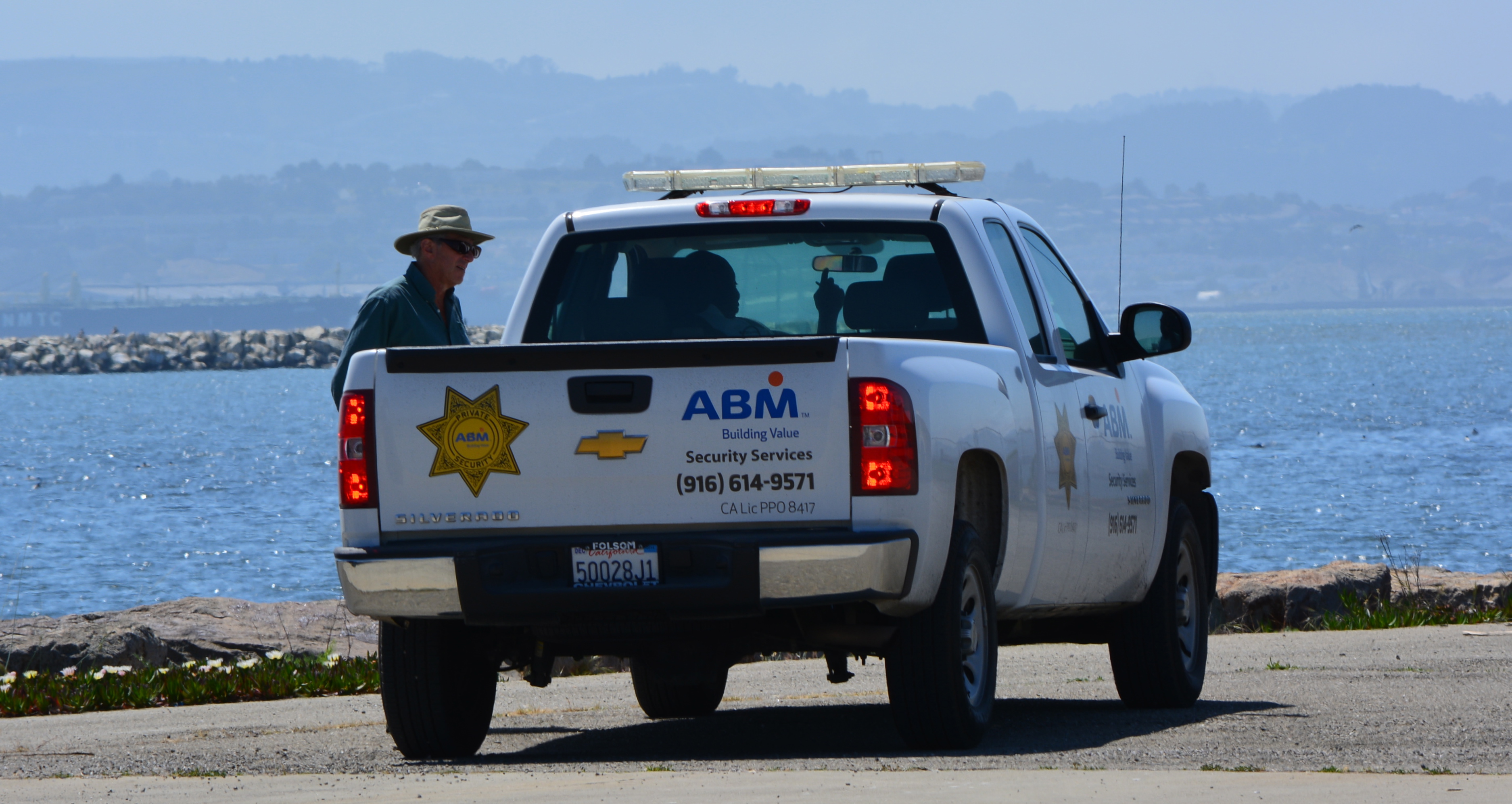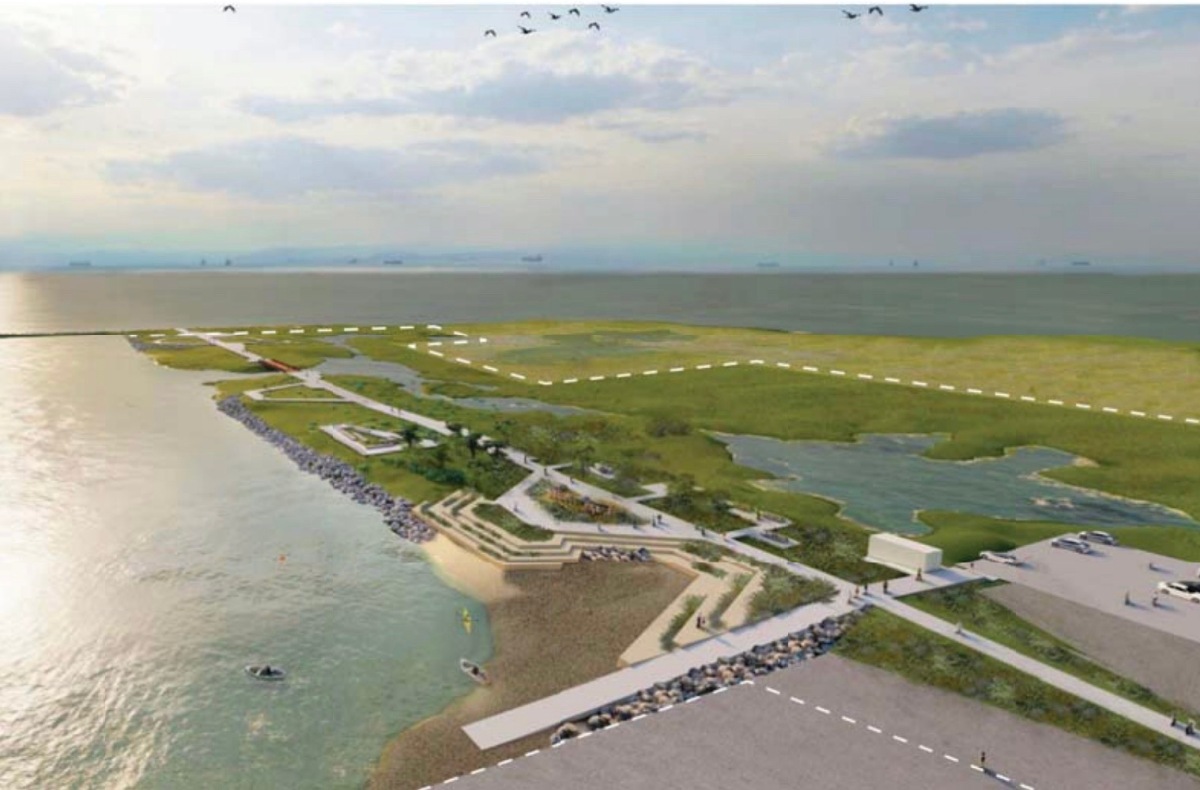In March 2024, after a decade of lobbying by advocates for wildlife and open space, the city council approved a Master Plan for building the ecological wetland park, known as De-Pave Park, at Alameda Point.
Continue reading “Updated De-Pave Park plan given green light by City of Alameda”Tag: De-Pave Park
Maximum tidal wetland design approved for De-Pave Park
Environmental groups are celebrating an historic decision on what is now destined to become a model for shoreline ecological adaptation around San Francisco Bay.
At issue was whether to keep Building 25, a 55-foot-tall hangar, as a source of lease revenue, or remove it to maximize natural habitat.
On November 7th, ten years after the De-Pave Park concept was first introduced, the City Council approved moving forward with a plan to remove the building to make way for a park that will welcome sea level rise. The term “de-pave” refers to the removal of paving. The paving will be recycled on site to provide the elevated observation overlook and the elevated entrance. The decision was the latest step in the process of developing a Master Plan that will provide the foundation for receiving a multitude of regulatory permits and construction grant funds.
Continue reading “Maximum tidal wetland design approved for De-Pave Park”De-Pave Park master plan kick-off meeting April 15th
If participating in creating a wetland ecological park in Alameda is of interest to you, mark your calendar for this upcoming outdoor event.
The master planning process for De-Pave Park on the west side of Alameda Point’s Seaplane Lagoon begins with an in-person workshop on Saturday, April 15, from 3:00 to 5:00 p.m.
Continue reading “De-Pave Park master plan kick-off meeting April 15th”De-Pave Park slated to receive planning grant
Alameda’s proposed De-Pave Park project has made the short list for this year’s grant funding from the San Francisco Bay Restoration Authority. The Restoration Authority Board will hear staff recommendations and provide input at its February 25, 2022, meeting, with authorization coming at its April meeting.
Of this year’s 18 applicants, six have been selected for funding. The recommended award for De-Pave Park is $800,000. This amount is expected to cover the cost of developing a master plan, as well as the first level of construction drawings.
Continue reading “De-Pave Park slated to receive planning grant”Security Firm Is Failing Alameda Point
Despite the city’s attempts to curb large unauthorized car events on the west side of the Seaplane Lagoon at Alameda Point, wimpy gates and lax security have not stopped abuses or muscle-car madness.
On October 19, 2021, the City Council voted to block off most of the auto traffic at the future De-Pave Park area. In November, yellow-painted concrete blocks were placed around the area next to the Seaplane Lagoon shoreline, which is intended for the quiet enjoyment of cyclists and walkers.
Continue reading “Security Firm Is Failing Alameda Point”Volunteers clean up trash on shoreline of future De-Pave Park
It was an unsightly mess that motivated concerned residents to spring into action.
About 20 volunteers showed up on Sunday morning, October 17, to pick up the blanket of litter along the western shoreline of the Seaplane Lagoon at Alameda Point. This area is a popular destination for recreational visitors, many of whom leave their trash on the ground. The city recently took steps to stop side-show activity there.
Continue reading “Volunteers clean up trash on shoreline of future De-Pave Park”City blocks car access to Alameda Point waterfront
On Sunday, April 19, Vice Mayor Frank Matarrese drove to the shoreline on the west side of the Seaplane Lagoon, and within minutes of arrival he was ordered to leave the area by Alameda Point security. He was not alone. Anyone visiting the area, which is designated as a future naturalized park on planning maps, was subject to the same experience.

The Navy temporarily restricted public access to the area over the last few years because of environmental cleanup, but removed its fencing in mid-March allowing the public to once again visit the waterfront.
Nanette Mocanu, the city’s Economic Development Division Manager, explained that the city immediately re-established the no public access rule because of a case of illegal dumping and evidence of car “side show” activity. “We will be installing our own fencing that will prevent car traffic to the area, except for the tenants,” said Mocanu. “There will be a pedestrian gate to allow people to walk along the waterfront area.”
 An investigation of the tarmac area revealed a few tire tracks, but otherwise it was clean. Similar displays of tire tracks from “side show” activities appear prominently throughout Alameda Point. Illegal dumping has been a problem at the former Naval Air Station since its closure, concentrated mainly in abandoned housing areas, not on the tarmac.
An investigation of the tarmac area revealed a few tire tracks, but otherwise it was clean. Similar displays of tire tracks from “side show” activities appear prominently throughout Alameda Point. Illegal dumping has been a problem at the former Naval Air Station since its closure, concentrated mainly in abandoned housing areas, not on the tarmac.
Most visitors to the area have one destination in mind, the southern shoreline facing San Francisco Bay. They are usually there for only short periods of time. Under the city’s car restrictions, visitors arriving in cars will have to walk four tenths of a mile across a paved landscape to arrive at the Bay shoreline. Access will be limited to those with the desire and mobility to make the trek out to the shoreline vista point.
Matarrese was not pleased with the city’s plan to restrict the area. “I do think there is a better way, like opening and closing the gate at sunrise and sunset, since the guard is out there anyway,” said Matarrese. “I’d even be able to live with the stated restrictions if it meant a concerted effort, with a plan and a timeline, to build the park described in the waterfront plan adopted last year.”
The Town Center and Waterfront Precise Plan, approved by the city council in July 2014, calls for the western side of the Seaplane Lagoon to become “a park for visitors to enjoy nature and appreciate ecologically rich constructed habitat areas.” Referred to as De-Pave Park, it “combines a proactive ecological agenda with a compelling visitor experience by placing a picnic, camping and interpretive program within a large scale sustainable landscape,” states the plan. “The landscape strategy is to transform this vast paved area into a thriving ecology by removing the paving and nurturing ecological succession.”
Published in the Alameda Sun.

















